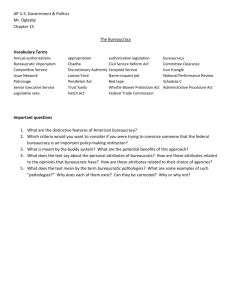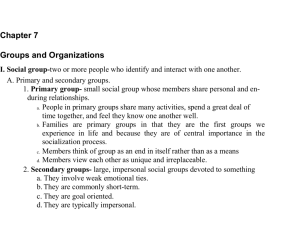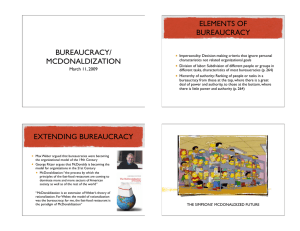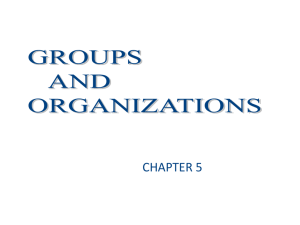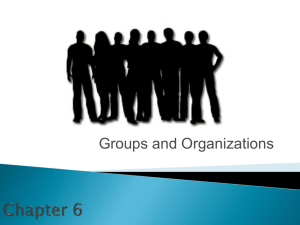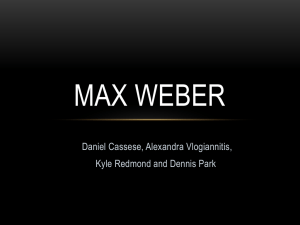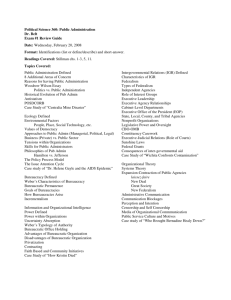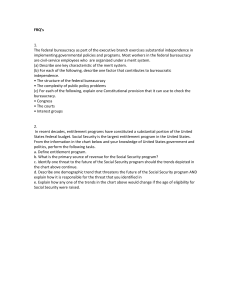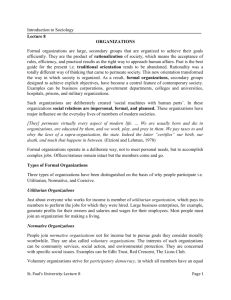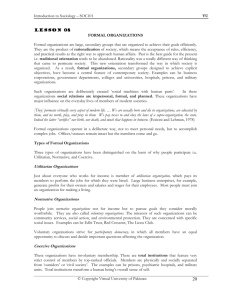1. A
advertisement
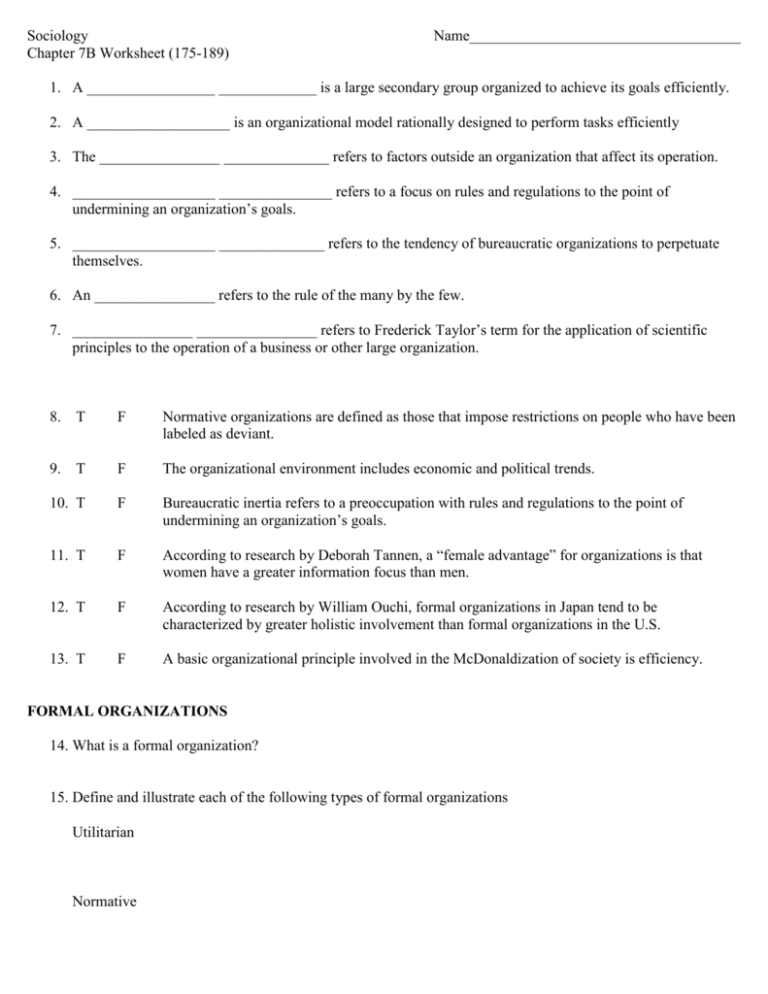
Sociology Chapter 7B Worksheet (175-189) Name____________________________________ 1. A _________________ _____________ is a large secondary group organized to achieve its goals efficiently. 2. A ___________________ is an organizational model rationally designed to perform tasks efficiently 3. The ________________ ______________ refers to factors outside an organization that affect its operation. 4. ___________________ _______________ refers to a focus on rules and regulations to the point of undermining an organization’s goals. 5. ___________________ ______________ refers to the tendency of bureaucratic organizations to perpetuate themselves. 6. An ________________ refers to the rule of the many by the few. 7. ________________ ________________ refers to Frederick Taylor’s term for the application of scientific principles to the operation of a business or other large organization. 8. T F Normative organizations are defined as those that impose restrictions on people who have been labeled as deviant. 9. T F The organizational environment includes economic and political trends. 10. T F Bureaucratic inertia refers to a preoccupation with rules and regulations to the point of undermining an organization’s goals. 11. T F According to research by Deborah Tannen, a “female advantage” for organizations is that women have a greater information focus than men. 12. T F According to research by William Ouchi, formal organizations in Japan tend to be characterized by greater holistic involvement than formal organizations in the U.S. 13. T F A basic organizational principle involved in the McDonaldization of society is efficiency. FORMAL ORGANIZATIONS 14. What is a formal organization? 15. Define and illustrate each of the following types of formal organizations Utilitarian Normative Coercive 16. What is meant by the term bureaucracy? 17. Max Weber identified six key elements of the ideal bureaucratic organization. Define and illustrate each of these elements. Specialization Hierarchy of offices Rules and regulations Technical competence Impersonality Formal, written communications 18. Identify 3 examples of the informal side of bureaucracy. 19. Identify and describe 3 major problems of bureaucracy. THE EVOLUTION OF FORMAL ORGANIZATIONS 20. What are the 3 steps involved in scientific management? 21. Describe the nature of the 3 challenges facing formal organizations in our society today. Race and gender Japanese organization The changing nature of work 22. What are the major characteristics of the McDonaldization of society? Provide evidence for the existence of each in our society today. THE FUTURE OF ORGANIZATIONS: OPPOSING TRENDS 23. What are the two opposing tendencies identified by the author?
